
Bar II | Miraflores | Lima | Perú | Impresión Lambda | 126 X 126 cm. |1/5 | 2007

Art Gallery | San Isidro | Lima | Perú | Impresión Lambda | 126 X 126 cm. |1/5 | 2007
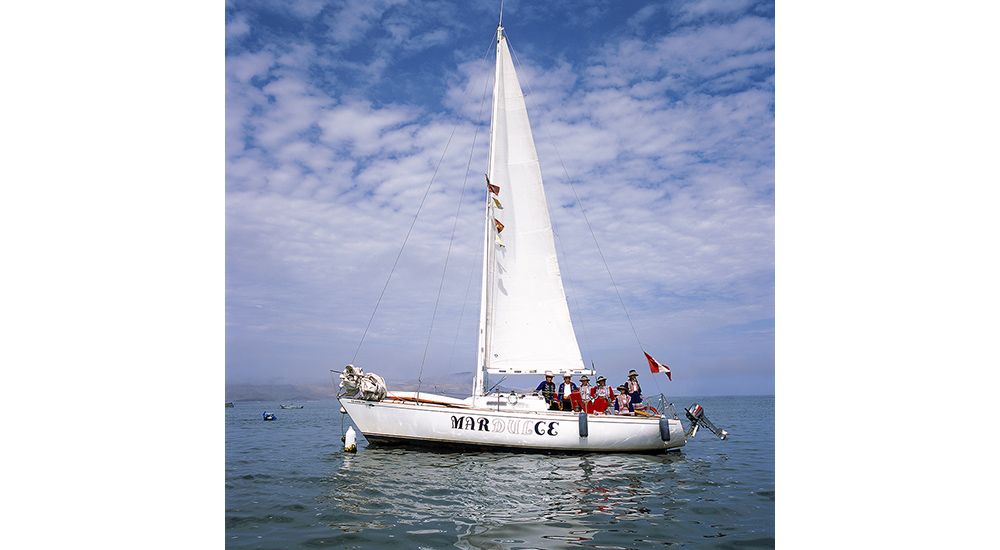
Sailboat | La Punta | Callao | Perú | Impresión Lambda | 126 X 126 cm. |1/5 | 2007
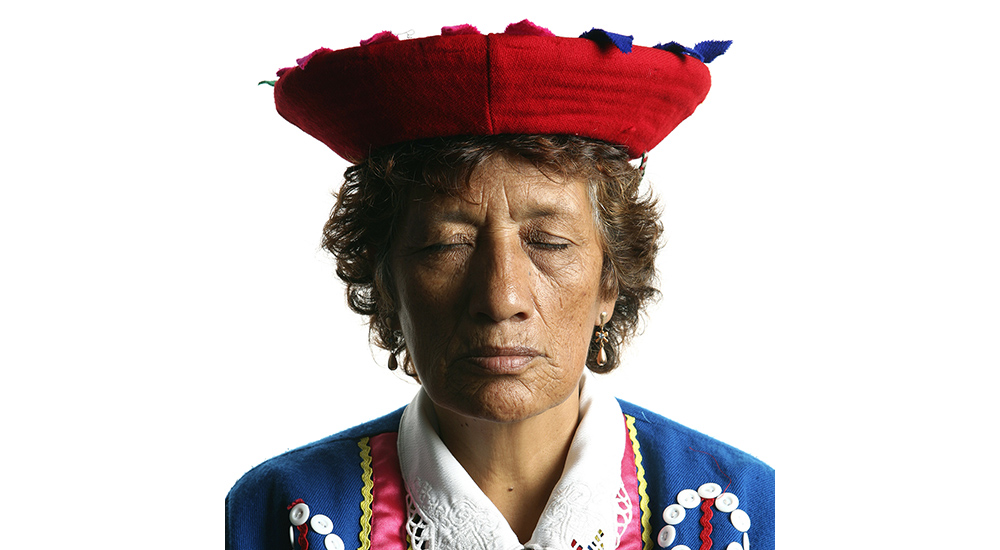
Ricardina | Impresión Lambda | 50 X 50 cm. |1/5 | 2007
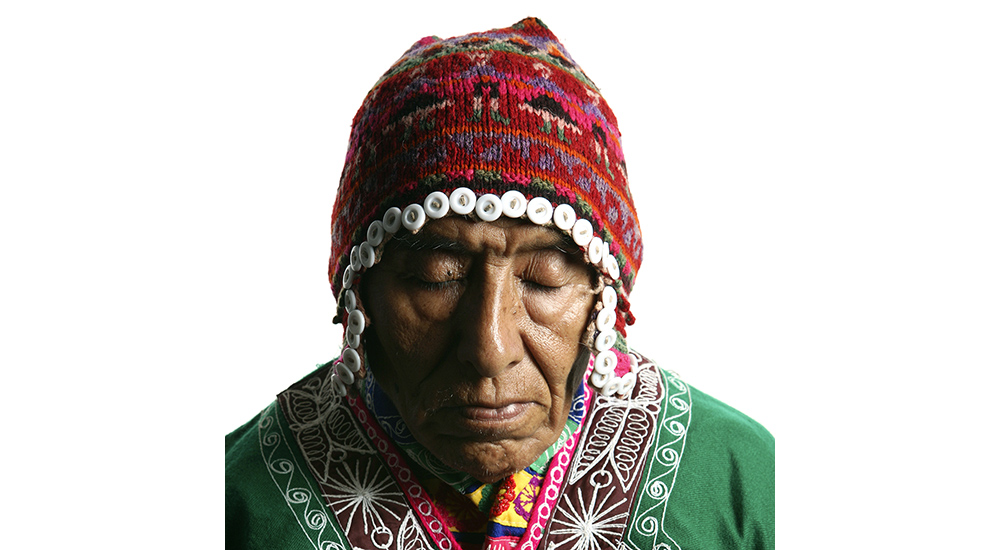
Juan Dionisio | Impresión Lambda | 50 X 50 cm. |1/5 | 2007

Lidi | Impresión Lambda | 50 X 50 cm. |1/5 | 2007
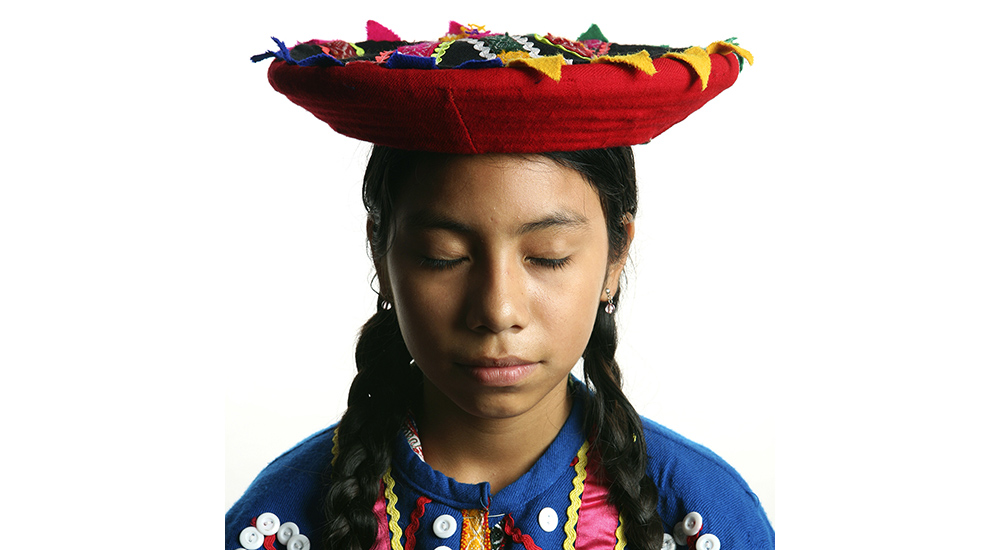
Brigith Vanessa | Impresión Lambda | 50 X 50 cm. |1/5 | 2007

Gianella | Impresión Lambda | 50 X 50 cm. |1/5 | 2007
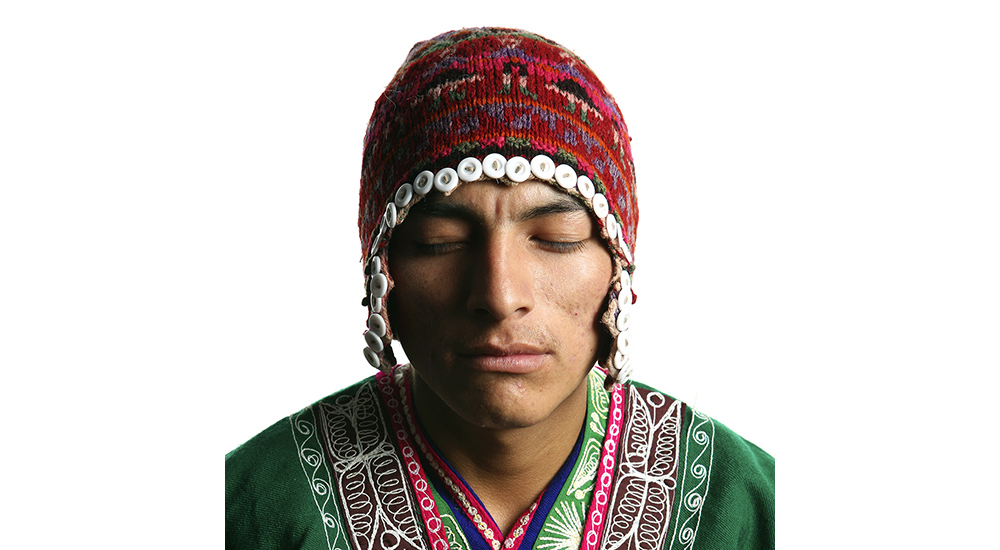
Henry | Impresión Lambda | 50 X 50 cm. |1/5 | 2007
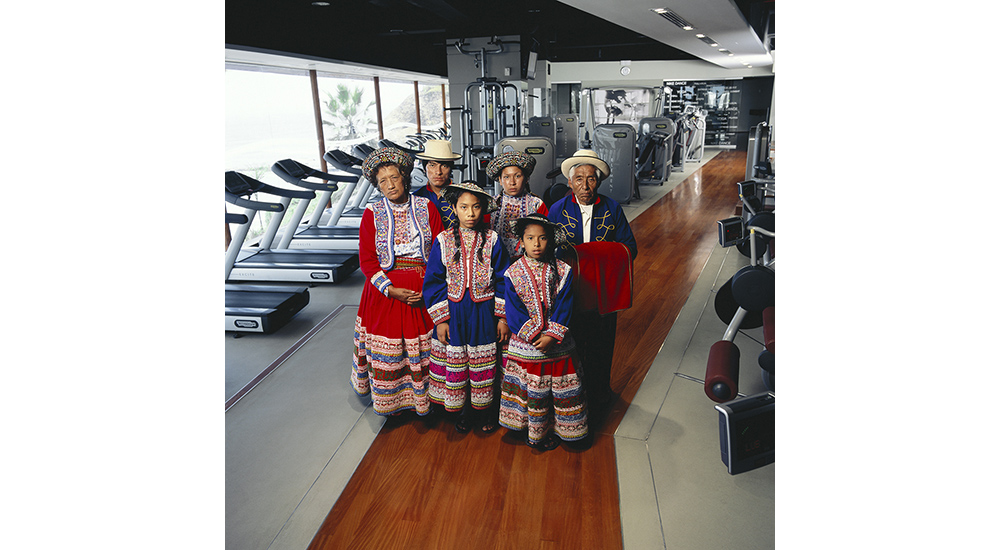
Gym | Miraflores | Lima | Perú | Impresión Lambda | 126 X 126 cm. |1/5 | 2007
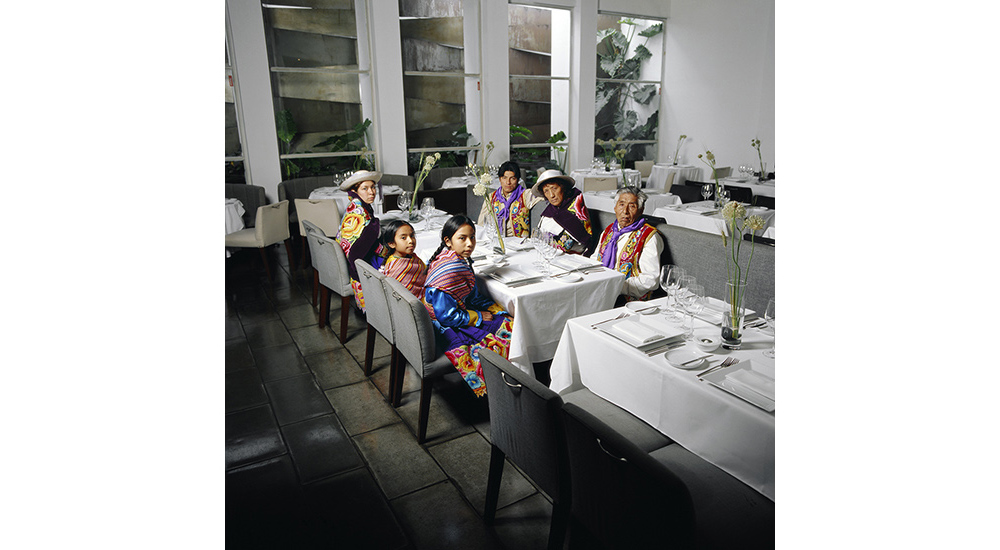
Restaurant | Miraflores | Lima | Perú | Impresión Lambda | 126 X 126 cm. |1/5 | 2007
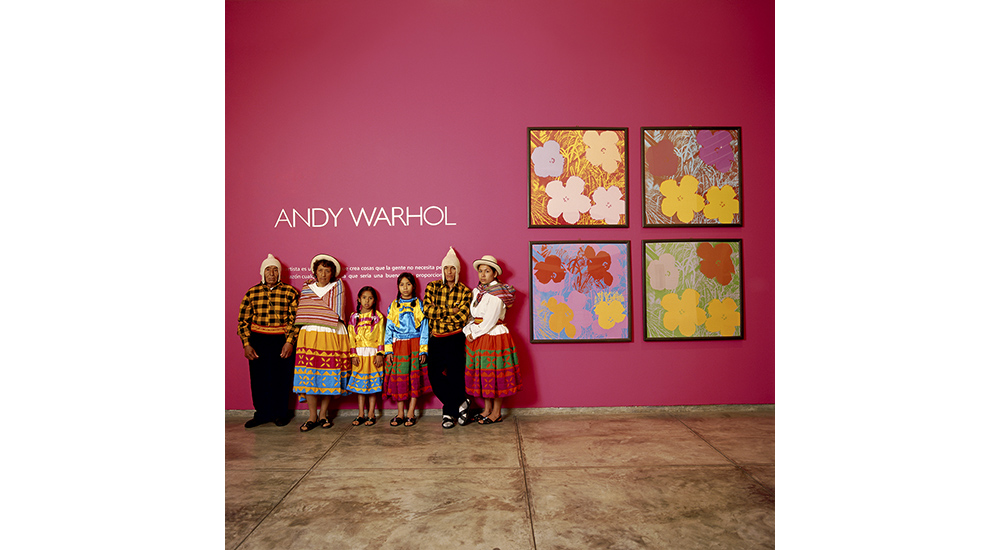
Cultural Center | San Isidro | Lima | Perú Impresión Lambda | 126 X 126 cm.|1/5 | 2007

Theater | Miraflores | Lima | Perú | Impresión Lambda | 126 X 126 cm. | |1/5 | 2007
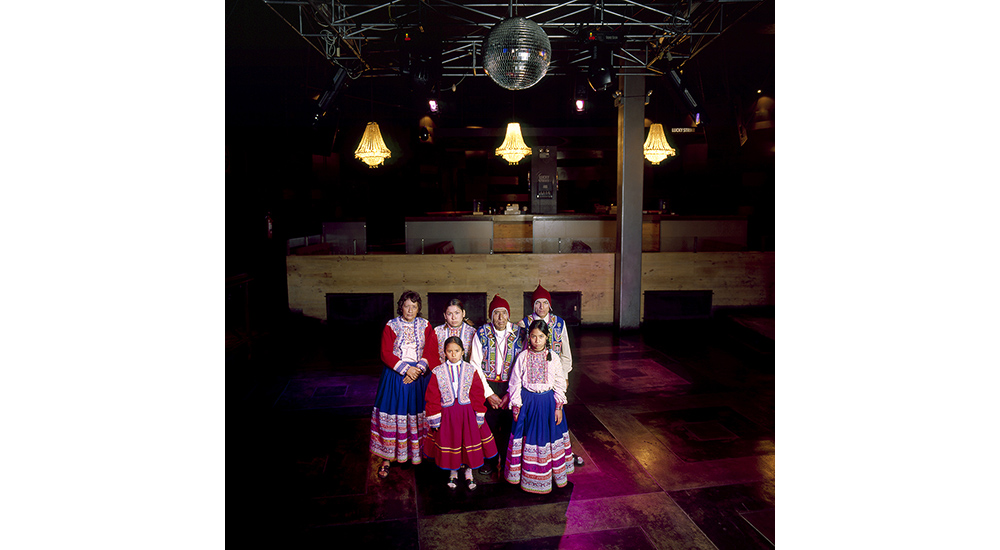
Disco | Miraflores | Lima | Perú | Impresión Lambda | 126 X 126 cm. |1/5 | 2007
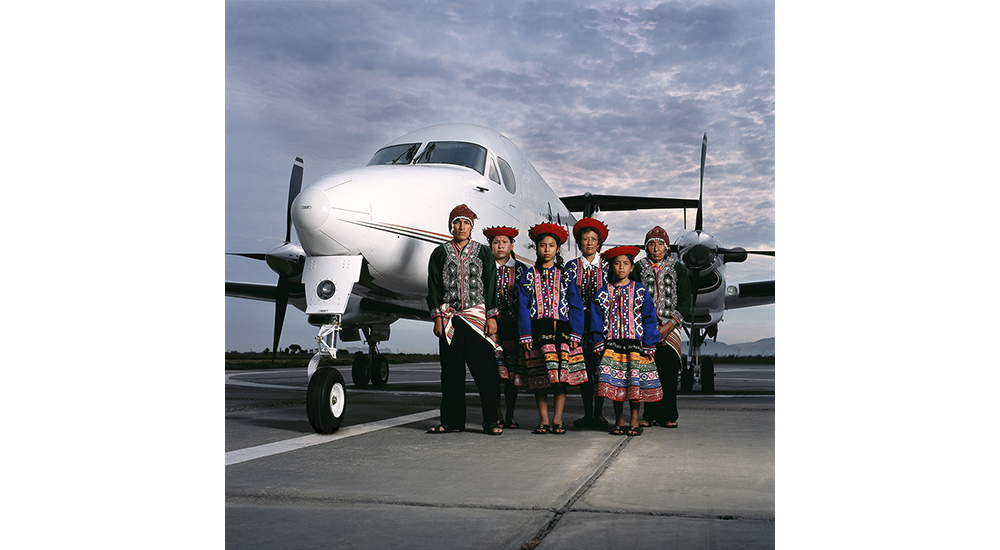
Jorge Chávez International Airport|Callao | Perú | Impresión Lambda | 126 X 126 cm. |1/5 | 2007
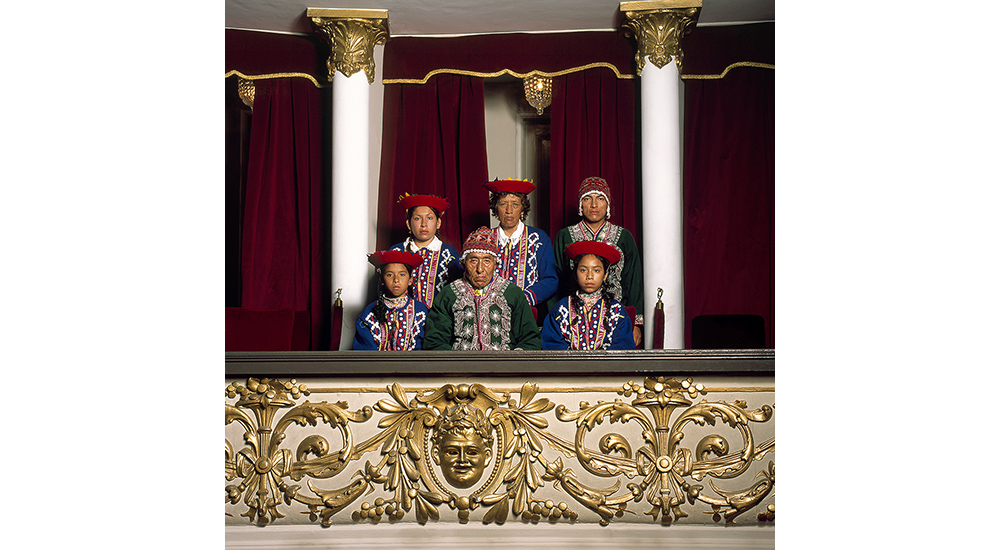
Box | Miraflores | Lima | Perú | Impresión Lambda| 126 X 126 cm.|1/5 | 2007
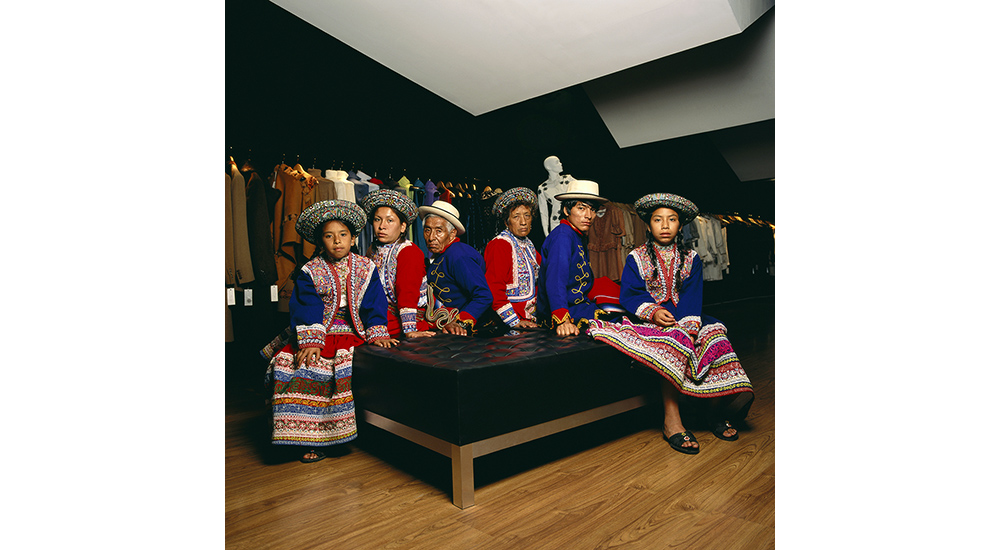
Boutique | Miraflores | Lima | Perú | Impresión Lambda | 126 X 126 cm.|1/5 | 2007

Bar | Miraflores | Lima | Perú | Impresión Lambda | 126 X 126 cm. /5 | 2007
SEE catalogue
MR | IF THERE IS NO OTHER WORLD, THE INJUSTICE OF THE POOR LINGERS PERPETUALLY
— No, I am sorry you can not get in with these people.— The manager gave me permission.
— I am sorry he did not tell me anything. I can not let you in.
— But this is a public place. You have no right to stop us.
— I am sorry but I can not let you in.
— One question: if instead of coming with this Andean family, If I were to come in with three Swedish blondes in miniskirts, would you let me in?
I think here in Peru is more natural and less strange an Andean family than three Swedish blondes in miniskirts, don’t you think so?
In any school of Peru, children learn soon the heartrending and cruel tale of Paco Yunque by Cesar Vallejo in which the protagonist is subject, from his childhood and at school, of the most incredible torture and injustice just because he is poor and though Vallejo does not mention it, “cholo”. Since childhood, children are taught with this tale making difference. Racism and its consequent exclusion is a bad habit spread out all over the world. The cholo in Peru is subject of the most absurd racism because as the popular expression says all Peruvians are cholos: “you got something from inga and mandinga”. But not only in Peru but all over the world we are cholos, fortunately we all are a mixing of many races, colors and cultures which enrich us, but still today there is a lot of people who do not know or do not want to know.
The binomial racism and poverty are very close, the exclusion also appears apart but they are usually bound together. As a consequence of racism, it is taken from granted as poor who maybe is but not so, but for the materialist society the physical aspect is determining in order to be accepted or not. The relief of the sufferings of the people who had bad luck in life and who is in a different situation of marginality, poverty, racism, etc is the notion of another world where they will receive their reward because of all the suffering and fear they have gone through in this world. But, if there is no other world? What is the reason for some people to have a short life of luxury and other people to live at the most absolute poverty? Who compensates this injustice?
ART MUST FIGHT THIS INJUSTICE.
In order to build a more fictitious and artistic world more here, we try to understand what was the possible desire of a not privileged family who were longing for a compensation, we decided to make a series entitled SUEÑO CHOLO showing images we think Andean families would dream of, and this dream, we suppose, is that they are like us, own huge design houses with high technology and wander around the comfortable spaces we are used to.
Any assumption about the life of the rest is a chimera, in this we were also supposedly arrogant thinking the poor want to live a life so disgraceful and insipid we and the rest are living. Incongruous until exaggeration we think they just pretend to imitate us in everything. It is probably not so, the paradise or dreams of the rest do not have to coincide with ours, fortunately, the materialist matter so important for some people, it is not so for anybody, and in any case, the concept of the materialist could be different.
Our characters could have never enjoyed the materialist society, they just do it falsely by means of our photographs for their welfare is a work you charge for, a work which is posing in an environment to which they would have any access at all and which lasts for them the time the posing lasts though for their images and history they would enjoy eternally.
They do not show boredom in their faces, the disillusion of having possessed everything from the beginning, of everything granted, the contradiction of their own existence. For our models, though we tell them and rehearse for hours in which they put a face with a confused, annoyed, distressed, sick of anything confusing...it is impossible, in their eyes there is no void, there is always a shadow of life, of curiosity...Our models could suffer any disease but the Hikikomori.
We do not pretend the superficiality of the reality show programs like those which change permanently the physical aspect of people with the sickness of the pre and post operation. This is not a mass media game, we are not going to interfere anything. We, just like an ornithologist, with most respect, measure, weigh and make rings the bird in order to set it free, we do not modify its destiny, they only one who can modify it is himself and the circumstances. We will never be a circumstance, we are as anybody false historians, creators and inventors of false sources. Our photographs pretend to make an accusation but it is very probably that this accusation could become, due to the own same avatar of history, a proof to justify a society endemically injustice at the present and falsely presentable in a future in which not even the past could be happy, unfair. Any history is false in any aspect or at all...
What would happen if these models, this “Andean” family was really such and live much better than us and, for their physical aspect, they would make a joke on us and have disguised themselves as Andeans, costumes considered by the inhabitants of a great city as of a low economical level though they were a family of exporting impresarios and the proprietors of the yacht, the house, the car, the collection of Bedia paintings, the private jet...Racism is not only economical.
POSTCARDS FOR THE FUTURE.
Social art is the one compromising here and now with the problem testing it in a society eager to ignore it.
It is a contrasting fact that in New York almost any Contemporary art gallery visitors are white, the same happens in Lima...it is very difficult to see cholos. Why does this racial pureness exist in Contemporary art context? It is not described in the tradition and behavior manual of other races to see and participate in Contemporary art? To see and participate in Contemporary art is forbidden for these who are not white and rich? The cholo and the poor have to resign with handcraft?
It is very strange that in countries like Peru, social art has a little number of adepts, it is probably because it is not profitable and because partisan connotations have not been founded in a very evident way, it is difficult to be at the frontier of the social and the dogmatic militant, between the reward less partisan accusation and the interests of a concrete group.
Is it possible the social art without the political art?
Disparities and racism are endemically in Peru, as in many other countries, this series of photographs tries to put in circulation images that subtly denounce it in order to be purchased by the elite that supposedly is racist and encourage disparities. Is it not incongruous? Is there a non racist elite? We do think so.
But it could happen that the racist purchases photographs as a game. A game in which a racist really does not make any difference with what is denounced and consider the images just as shocking and amusing and exclaim: “Cholos at my bathroom”. How is it possible¡ when he looks at the Andean family photographs filling his more intimate and daily places.
Other people, at the other hand, can feel threatened with regard to a possible future. It will be tolerable that in a close future in my exclusive condominium we have as neighbors a family of cholos? Doubts that express a fear towards the end of the supremacy of beautiful and rich white people... In all the process of the execution of the photographs, a lot of anecdotes happen to us confirming that we were in the right way by doing this series, that this was not an invented racism by us in order to reaffirms as socialist and modern. The faces of so many neighbors when they saw us accompanied by the well costumed Andean family were quite evident and express fear, surprise, anger: we had trouble with the permissions, locations, a lot of them felt as an invasion of their exclusive space...for those who think that an Andean family could adapt to luxury pleasures and their modus vivendi, we want to say, in order to increase the fear of those who consider integration as impossible, tat the Andean family once the initial surprise went away, fast adapted to the new situation and in thirty minutes they were by now making themselves comfortable normally in the house, as if they had lived there for life. The concept of exclusiveness and difference is relative, everyone is adapting fast to comfort.
IMAGE.
It was not easy to choose the family, it had to be Andean, rural, poor but, as my grandmother says “honorable”. I do not know why we have to add the word “honorable” to the poor as if they were unworthy, it is another classist pigtail contained by our language. The family had to know from the beginning that their image was going to be used, what was the purpose of it, and what could be the repercussion. They understood immediately what was it all about and made everything easy , in this case, we counted on the support of Rosa Maria Alvarez Gil to whom we have supported with the documentary LIMA WAS about eh “wayno” contests in the Andean regions and cones of Lima, she knew an artisan family we used in the sessions. We had to establish mutual trust relationships because the working days were going to be rough with multiple displacements and possible troubles because someone could show their anger openly for the invasion of his privileged space by people, that according to his opinion, are not related to these places.
During the photography production, anecdotes were abundant but we also faced racist attitudes in our way as well as the possible way, there were people who understood immediately what was the interest of the project and supported firmly even with the risk of having troubles at their own work. There was racism but there was also a lot of solidarity.
FAMILY.
We wanted to represent and impersonate the racism in a family although each member of the family in his individual space received during the day any direct and negative effect of his condition, the family is a protective nucleus as an island in an unfair society is a shelter and altogether having access to the most forbidden spaces tough isolated, they gain the dignity we want to distinguish. The basis of the social organization is the family, it is presumed since pre-history, that is the one which gives you a place in the world, a culture, habits, and whatever the fast social changes may be, always remains as initial link and reference constant. The introduction of modes and new habits inside family is diverse beginning with the names, it is curious to see the names of the grandparents , they are called Ricardina and Juan Dionisio, traditional names. The children are called Lidi and Henry and the next generation Gisella and Vanesa... these names change we suppose as evident “modernization”, changes produced by the access to information and tv bringing an implicit desire of economical development: “my daughter will have the name of a gringo who has done well”. The name gives the family a “modernity” and development towards other families then it spreads out and the families around adopt the same names for their children . Immigration has also a lot to do with these names and habits changes. But these changes are just nominal, tradition is very rough and from the start modernity is a superficial element.
At the end of the XIXth century, families were photographed in a studio, these photographs are just a collective national identity document with all the members dolled up in their best costumes in order to remain in this scenery almost always superior to the place they live in, but fictitious, created with a painted background and some object. At the studio, the scenery will always be the same, what will change is the family that just for a moment inhabit the place. This series of MR could be a Contemporary remake of ancient photographers, among the Peruvians as Chambi. MR moves from the Andean region a peasant family and introduce them in a house of “high standing rich people”. The decoration where MR place the family is so unreal for themselves as were those in which families were portrayed at the photographer studio.
MR. They are linked to the great tradition of family photographers, from the American Depression in Dustbowl brilliantly photographed by Walker Evans, the dysfunctional ones from Diane Arbus, the contrasting ones from the series of Rich and Poor of Jim Goldberg, the high class ones of Tina Barney to the own and freakies of Richard Billingham and Enrique Marty.
FALSE DOCUMENT.
Besides these photographs as well as the rest, we are creating a historical document, a false historical document. Rosa Olivares curated an exhibition called Documentos: la memoria del futuro*. In the introduction text analyzes photographs and documents and the importance of the intervention clic time of the artist, we arrive to believe there eternal images we took as casual snapshots which the only invention of the photographer was present and have the certainty of previous manipulation to reinforce the propagandist effect on the aesthetics one, it is undoubtedly disappointing that Walker Evans in this well-known series of the American Depression of the thirties made pose extremely poor peasants which causes a certain reticence in the spectator, but Evans does not lie by documenting this extreme poverty, it existed such as reflected though the image arrived to be stylized having in mind that the photographer is an artist.
The film The Conquest of Horror by Clint Eastwood is a clear example of how an image turned into emblematic in the history of the United States had been a remake carried out after the original moment. Does this rest value to photography? Does it lose its condition of document? The photographer was there, the photograph was made in a historical place and the fact happened apart from aesthetics ornaments.
In this series MR proposes that we see as real as an action that by now it is not true, unbelievable in its context. But what happens if these photographs remain in time without the generating documentation of the 2007 year? Looking at them, future generations could think that Peruvian cholos lived surrounded by great comfort and that had an exquisite taste above from the average.
The grandfather of the family posing on a Mackintosh seat, the Andean grandmother enjoying the most advanced kitchen opposite to what we think she was managing in a dark firewood kitchen, children using the hydro massage bathroom and the parents watching a film in the huge plasma tv at the bedroom, the family posing quietly in front of their private jet or yacht for Sunday rides...these could be images altering Peruvian history. History is more about what hasn't been told than what has been told. With time, societies lose more information than what they keep, that is why any vision of the past is partial and wrong.
On the other hand, if we do not achieve and equality society that unfortunately we can not achieve right now but as if we long for it happens in the future, this photographs will serve as historical documents to examine our Contemporary society from that terrible injustice and when at last anybody can enjoy comfort, luxury, security levels by means of the documentation of MR this injustice will extend falsely to the past.
When we decided to portray them individually, we took the decision of making the models posing with the eyes shut, we do not know if they would ignore us, we do not know if they would dream or with eyes shut because they are dead to us.
* Rosa Olivares. Documentos: la memoria del futuro. cat.exp. Museo de arte contemporáneo de Vigo, Koldo Mitxelena de San Sebastián... 2007.
MR | OF CHOLOS, TRACES AND PRIVILEGES , by Rafael Doctor Roncero
ALMOST TWO HUNDRED YEARS HAVE PASSED SINCE THE INVENTION OF PHOTOGRAPHY. The purpose of its creation was simple and essentially linked to facilitating the studies of painters specialized in portraits which were lavish in the large cities of old Europe. Possessing the image of a loved one, of a character or a self-portrait was a luxury reserved only for the bourgeoisie, aristocracy and ecclesiastical authorities. It was the time of carved small portraits or painted on camafeos. Owning a painting or sculpture representing a person was a privilege that defined the owner’s superior position regarding the rest who could not afford anything similar. It is not that the history of human representation only portrayed the rich and powerful; the poor have also appeared, however, playing a role they did not choose, used only to create scenes of decorative value. Let us think about the beggars portrayed by Murillo in the XVII century. Unbeknownst to them, the poor were portrayed to become part of a pintoresque image with no positive impact on them, turning them into mere ornamental items for the wealthy capable of self-amusement in a perverse aesthetic implied by the condition of the poor.Because of optical and chemical research done at the beginning of the XIX century, it was possible to create a device capable of condensing light on a lens, one that could be projected over an even surface and finally fixing it over it. After many years of research, the process successfully proves the volatility of salts in relation to light.
In spite of the simplicity of the statement based on the reaction of the elements to the light observable in the everyday world, such invention occurred yet another result of the emerging society of Europe, which would extend throughout the rest of the world. We are in the first great stage of the Industrial Revolution and the introduction of capitalist paradigms as the only ideal of evolution. Such a growing society needed quick and useful tools to accomplish its worldwide invasion and thus photography became one of them. Moreover, that in spite of the discreet purpose of the invention, soon the world and power above all would understand its significance in everything that was evolving then.
The first photographs were experiments with places, landscapes and objects but soon the portrait- source of its purpose- positioned itself as the essential kind of this first large icon producer. Through the daguerreotype, in an early stage, and ambrotypes, ferrotypes, salt papers and albumins, the invention expanded over the western world becoming a sign of development and modernism.
Although at the beginning, access to photography was expensive and could only be afforded by the same people who early on would request their portraits in painting, briefly, technique developed thus reducing the price of the processes until accomplishing some democratization of its use. When this happens, photography is able to reach different society strata and the invention takes its true dimension. From now on not only the rich would enjoy the privilege of having an image of themselves or of their loved ones. With little money, a great number of people living in the cities would be able to own their own photograph just by going to the studio or soliciting from any of the large amounts of street photographers who began arriving from every corner of the world.
The process of democratization differs in each part of the world depending on the level of economic development and on its immersion into the capitalist process. Photography is a business and regarding profit-yielding businesses, the world always adjusts to whatever beliefs and cultural conditions necessary. Hence, photography invades everything and everybody in different ways and conventional ways begin to change. How was it possible that someone considered "a nobody" could now enjoy a privilege formerly reserved only for the wealthy? What was so important about being photographed that made everyone want to be in front of the camera? Was it a matter of lingering in time stemming from this invention or was there something else?
Certainly, there was much more. In front of the camera, the world appears more naked than ever before. There are no more interpretations, no different versions nor valid fantasies, but traces of light over people or things making up an image over an even base. And such traces meant many more things than expected at first. The trace was the same for everyone. The light falls just the same over anyone and does not have any kind of distinction. Everything was the same in view of photography; bishops did not have an aureole nor the kings were much taller nor did they show rays of light nor anybody occupied a space other than the one proportional to their bodies.
Photography came to impose some truth upon the fabrication on which the world based the idea of some dominating others with the purpose of structuring, distinguish, segregate and achieve control. The world was before the clear proof that every human being was equal and that there was no way of denying it. We are at the time where communist ideas stemmed from understanding a fair world, one in which photography proved to be a social fact. Revolutions arose and conquered but shortly betrayed their dreams turning them into nightmares. Photography was still there and evolved technically but its absolute trace of truth remained unquestionable.
In light of this differentiation, the dominant classes -who did not want to lose their privileges and by no means relinquish the invention- succeeded in adapting their supremacy in order to adjust photography for their own benefit. Thus, they began to paint photographs until they were felt like paintings or just kept on making their portraits using photography just as a tool to ease the task of reproducing a face. The world evolved and even if trains existed, they had first, second, third or fourth class seats.
Ricardo Ramón and Marina García Burgos have teamed up to form MR and have put in motion the exhibit "If there is no afterlife, the injustice toward the poor lingers perpetually", a photographic project with a very simple structure. The elements are perfectly defined and their compositions as well as their purposes are clear. In places where high society get together and mingle, they have placed a group of static cholos who are staring at us. They are together and hieratical as statues in spaces denied to them, places where they do not have any chance of belonging and where they are not invited. In these scenes, we feel the characters as cut out like a collage badly patched; it seems as if the same habitations in which they are posing wanted to reject them. We are bothered by their presence and, in spite of them doing nothing they remain staring straight at us. Are they asking us something? What are they doing? Whatever it is, something is sizzling. That is how we view it since their presence represents a great contradiction, which makes the artists´ intentions emerge straightforwardly.
It is the year 2008, in the midst of the future in times of science where humankind goes even further everyday. However, we can realize how the world has changed a little, at least in Peru. A society with a majority of cholo people makes use of these spaces where these people appear: privileged spaces reserved for a few who are looking for status symbols that can keep them as far as possible from the different ones who are usually those who have less but those who are more.
This the history of humankind whose worst chapter are recurrent and if it is herein reflected through this photographic series it is because that nowadays, today in Peru, far from developing towards a social justice that will allow for equality for everyone before the world, before the times we live in , it seems to travel towards a broader separation.
In view of photography, we all occupy the same space. We are all the same and before its trace, there is no possible reply. However, we feel the contrast of these scenes that will not stop sizzling. Something happens that contradicts this scientific statement. Perhaps our view is more affected than we actually believe and if there is any contrast it is because we feel some characters are in a place were they do not belong. The strategy of the game suggested by MR is perfectly outlined. We succumb to it because, though our reason tends to vanish the lie, internally we belong there even more so than we thought.
*Cholo: a racist term addressed to aboriginal Peruvian people.
MR | THE INDIAN COMES OUT OF ME, BY JORGE BRUCE | PSYCHOANALISTo
THE FIRST TIME I LOOKED AT THE PHOTOGRAPHS OF MR, it was something brief and my immediate reaction was of concern and confusion. That night I went to bed thinking those images had a paradoxical effect - according to the purpose of the authors - that not necessarily helped the reason that I presumed they have been conceived for: to show by means of hostile taking-out-of contest procedures, the disturbing alienation/familiarity of the other refused, divided, discriminated. Briefly: racialized. I think my first doubt was based on the stylization of the compositions. For me, racism is usually linked to violent, degrading and humiliating settings. My internal disagreement was that these photographs with a frozen, ironical beauty could be mingled in something like an advertisement picture or a magazine production. Too much glamour in this coloring display, I feared, for a subject that in psychoanalytical slang, as long as I understand it, relates to anal examinations in an environment infested by monochromatic retentions and droppings. Thus, this makes easy the selection and charting: this fits in, this does not fit in. However, the next morning - I presume the oneiric phase did its work - I did not feel it like that anymore. It was as if through the night the images had entered me, invading the space of my imagination silently tearing down my intellectual resistances.Yes, our language is contaminated. We say “invasion” or “to settle” and summon series of representations which, at the same time, are bound by emotional ties including shame, fear and rejection. Or else anger, the recovery eagerness, the rage towards disparity and the wicked injustice. But also the guilt, the remorse and even, who knows, a germ of curiosity that could change into a recognition or, why not being utopian, something beyond. In any case, the experience induced by the photographs of MR will be hopelessly expressed in terms saturated of meaning, deprived of pureness or innocence.
Let us say, for instance, “Indian”. What happens to us will depend on who we are, is it clear? (or is it dark?). Now there is no turning back. The veil of invisibility that racism spreads out over denigrated individuals has been drawn back. The negative hallucination of Freud - the active erasure of a perception - changes the meaning of the images devised by MR. They are deceiving, inconceivable representations, but there they are, firm, fearless and elegant. The other devalued, the other insignificant, the other as depositary of our more repulsive, stinking and obscene projections is seated at the table aside. At the art gallery. At the privacy of my gymnasium. At the living-room of my own house. He has taken possession of my relief, recreation and elitism privileged spaces. Just there where the idealized identification of the members of my reference group functions as a narcissist prosthesis whose security, I was reassured, was omnipresent and for life.
And he is looking at me.
Martin Chambi captures his individuals in situation. It is not fair to think about his portraits as naturalist or realist, poetry of the popular moment at a Cartier-Bresson style. The situations of an evident and false harmony are created by himself - an avant la lettre situationist - and by means of this trick he obtains a powerful and universal truth deeply moving. MR gives a more theatrical twist to the scenery, if possible, and plays the role of cognitive dissonance. While taking a look, we find the humanity of the insignificants and thus we face some alarming presences because they were always really down there in spite of the fertile, political desire, as Vallejo says, of ignoring them. Or else to relegate them into a glass cabinet of exotic objects, just as we collect pre-Columbian antiques, we hear vernacular music or we adjust typical costumes to Contemporary fashion design, in a filtered, aseptic and essentially impersonal environment.
The expression “the Indian comes out of me” comes from a rancid racist stock. It means the unexpected bursting of primitive, aggressive, destructive contents. It is taken for granted that from an Indian does not come out an Indian: this can only happen to anyone else. The Indian represents, in this sense, what is repressed, divided, the most primary defense against the disintegration distress and the return of my expelled parts, marked wih the sign of what is calumnious and inadmissible. But looking at the photographs of MR, the Indian comes out of me in a concealing way and this "desfamilyzation" makes me admit it without disturbing myself because it appears with a peaceful strength and goes through the exiled alleys by means of this subterfuge called by Freud “prime of seduction”. Contrary to what I thought at the beginning, the charming aesthetics of the images is what allows the overlapping of worlds and pierce the standstill compartments. Then ghosts gain life and require their right to identity. Fortunately, someone will decide to accompany them and go back the gap separating the narcissism of life from the narcissism of death. To hate, says the psychoanalyst Paul- Laurent Assoun, is a way of self-preservation until the destruction of the other while to love is a way of making the other to exist. It is a matter of selection.
MR | SHORT CIRCUIT, BY SANTIAGO RONCAGLIOLO | WRITER
ONE. Every photograph is a jail that holds a piece of reality. Within the jail borders there is room for everything that is visible: a couple embracing one another, a politician carrying a baby, a lion yawning. Taken away from their environment, these images gain life of their own. They are not taking part from a landscape anymore - a room, a political meeting, a zoo - but they exist by themselves, disconnected from time and far away even from the beings they represent, in a space aside limited by the frame. The photographer is a collector of moments who hunts them and hangs them on the wall just like an entomologist does to insects.TWO. We need photography because beauty of things is unnoticed by us. For a tourist, Paris is a beautiful city. For a Parisian, on the other hand, is a distressing city with an unbearable traffic. Only when they take tourists for a walk and see the world in their eyes, Parisians remember how beautiful the city is. The look of a photographer is the look of a tourist of life.
THREE. Let us take Robert Doisneau. His images rescue the beauty we lose for so much looking at it: a kiss amid the crowd in the street, a bride in a seesaw, a boy playing soldiers. We are usually too much in a hurry to notice the beauty of those things. The work of Doisneau is to recover it and teach us to detect it.
FOUR. Some photographers alter the world. They put things where they are not usually there. This is the case of Joan Fontcuberta. His photographs show snail-body women. Or dogs with astronaut suits. But these are not drawings, but photographs. And that is disturbing because we think photographs only show what there is outside. To twist the truth is also a way of laying it bare. If the world was as Fontcuberta represents it, we would look his photographs and ask “So? What is it special about these photographs?”. In return by taking a look at them, we find that reality is a place where women do not have a snail-body and dogs do not wear a uniform with no apparent reason for none of both things.
We exist in a space whose rules we do not control and which has no sense in particular. It is the way it is and we accept it. Art and philosophy remain just useless, vain, fascinating and desperate efforts to give it any sense at all.
FIVE. The work of MR acts both ways. It shows us what does exist and what does not exist. It collects tiny pieces from Peru that we left aside in the street, it repairs them and hangs them on the wall. There are houses with huge gardens and discotheques and art galleries and restaurants. There are pretty places for pretty people. And the characters in these photographs are equipped for the tourist. Their typical costumes look ironed, combined and fixed. Their skirts match with the walls and the floor.
However, at the same time, something does not work between these people and their environments. An interior designer would not put them there. Peruvian people represented in this collection do not take part of a decoration that does not belong to them.
SIX. MR shows this short circuit we call Peru. We see it ahead everyday. It is the short circuit between the exclusive walled up beaches and the poor human encampments around. Between the casting of the perfume and the detergent advertisements. Between those who serve lunch and those who eat it. But we do not see it. We live equipped with sophisticated mental evasion devices. When a beggar gives us his hand, we pretend he is not there. We turn him invisible. Our language is also designed this way. We use words not to describe reality but to conceal it. We call wretched neighborhoods “pueblos jóvenes” (shanty towns). And we call the poor “popular class”, or we use the most aseptic “C and D ranks”. This exhibition is focused on what we do not want to see about ourselves like a deforming mirror.
SEVEN. The effect of these images is based on the fact that they show a country so non-existent as the snail-body woman. But these photographs also hold the proposal of what may become. They even suggest more, they challenge us to face them someday and ask “So? What is it special about these photographs?”